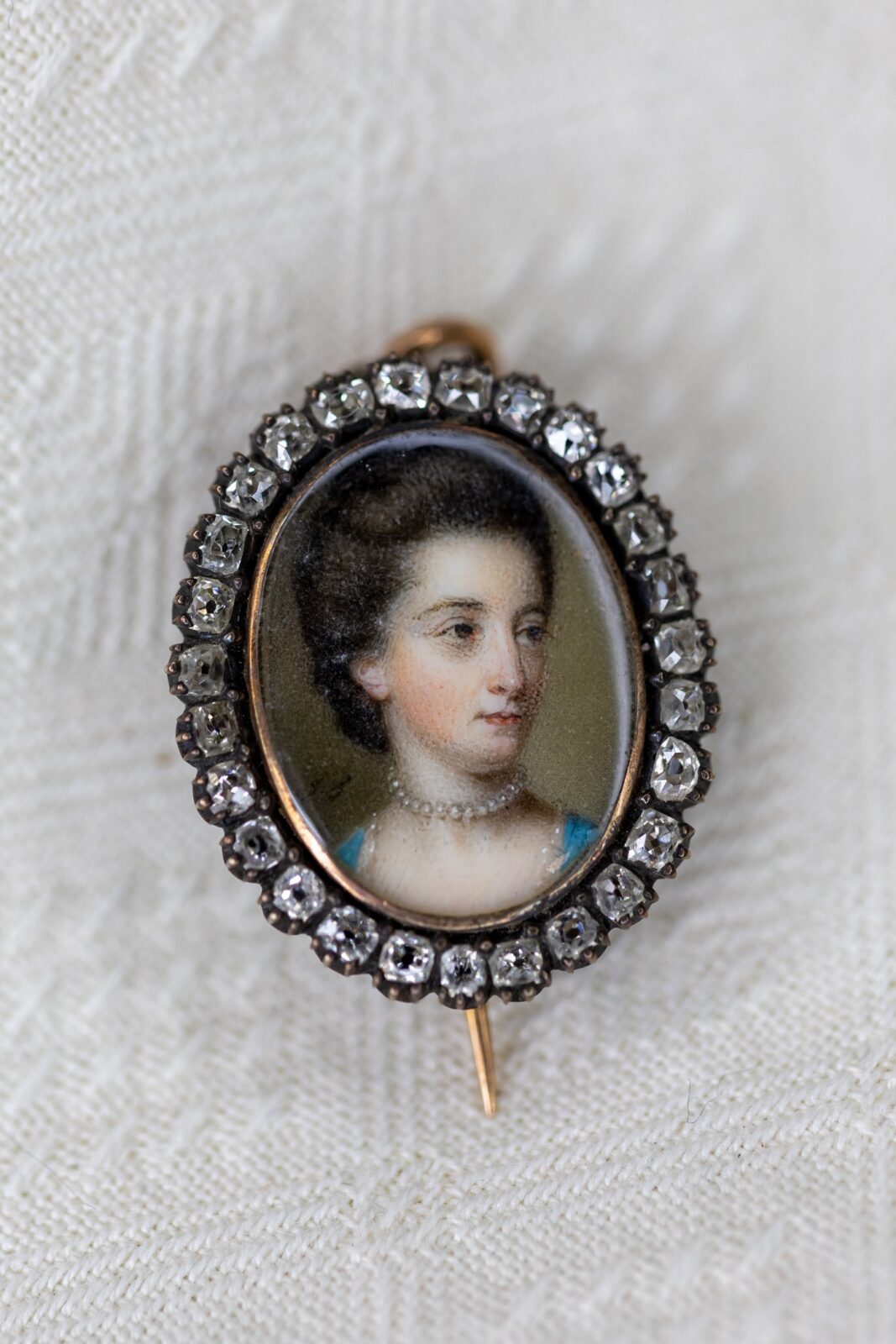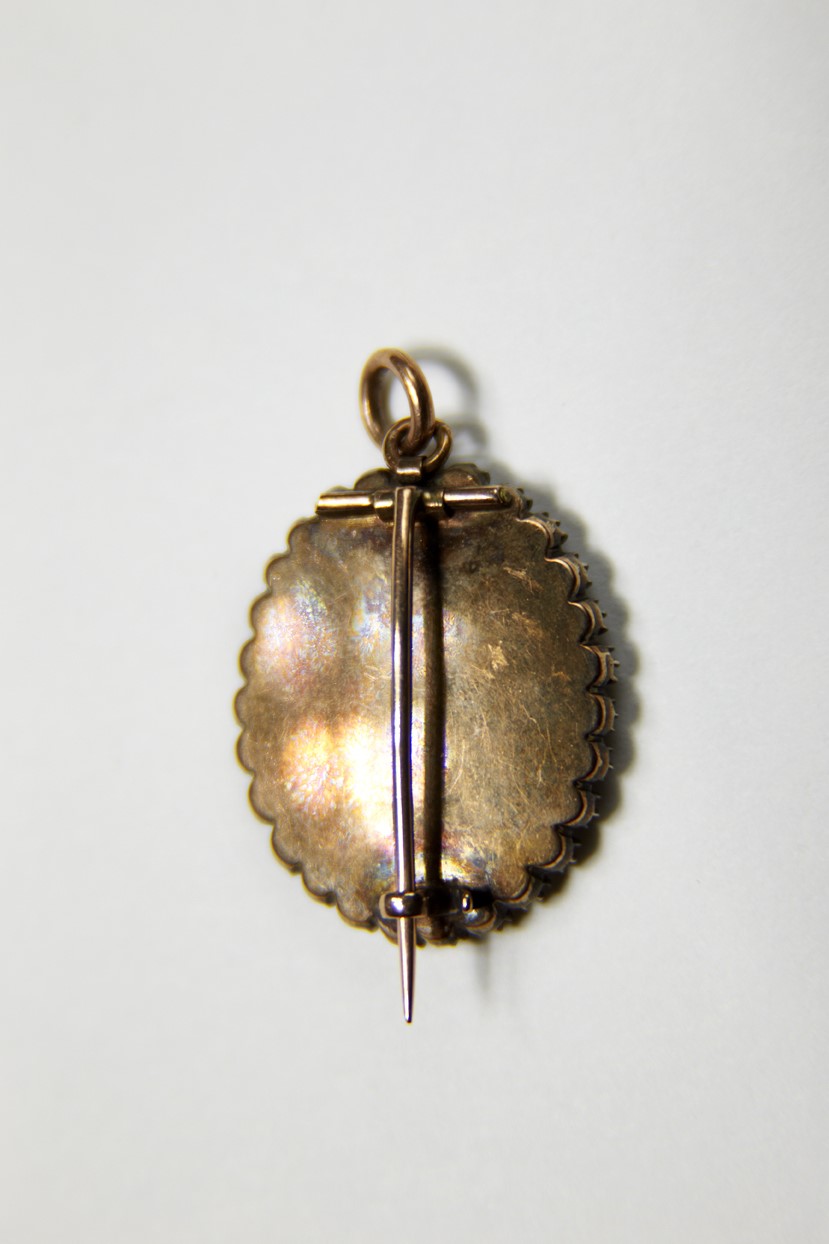Portrait Miniature of Mrs Philadelphia Hancock
Object name: Miniature on ivory of Mrs Philadelphia Hancock
Object number: CHWJA:JAH23
Category: Object
Description: A miniature portrait on ivory by John Smart mounted in gold and framed with diamonds. The subject is Mrs Philadelphia Hancock, sister of Rev. George Austen. Currently a brooch, the miniature was originally mounted in a ring.
Made: circa 1768
Context: The miniature, in its original setting as a ring, belonged to Philadelphia Austen’s husband, Tysoe Saul Hancock, whom she married in India in 1753.
Philadelphia, her brother George (Jane’s father) and their younger sister Leonora were orphaned at an early age. The siblings were dispersed amongst different relatives and with no prospects of a dowry or hopes of inheritance, Philadelphia was apprenticed aged 15 to a Covent Garden milliner in 1745.
Having completed her apprenticeship Philadelphia decided to seek her fortune, in the shape of a wealthy husband, in the colonies. She set sail for India in January 1752 and within six months of her arrival in Madras, married Tysoe Saul Hancock, a surgeon in the East India Company. Their daughter Elizabeth (known as Betsy as a child and as Eliza in adulthood) was born in 1761. It is thought that the miniature was painted by the renowned miniaturist, John Smart, after the family returned to England in 1765. For financial reasons, Tysoe returned to India alone in 1768 taking the miniature with him. He never saw his wife or daughter again.
On his death in 1775, he left the ‘miniature picture of her mother painted by Smart and set in a ring with diamonds round it…’ to Eliza with the wish she would never part with it. It is likely that it was Eliza that converted the ring into a brooch.
On Eliza’s death in 1813, the brooch passed to her husband Henry, Jane’s fourth brother. At some point he gave the miniature to his sister Cassandra as in her will, she left it to him along with some other items of jewellery which ‘all came from him’.
The miniature passed through female members of the family until it was acquired by Mr T. Edward Carpenter, the founder of the museum at Jane Austen’s House, in 1950.
Other objects you might like:


